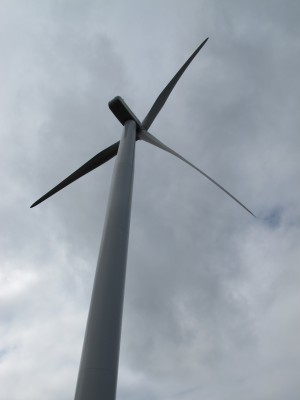A Third Of The Way Through Its Timeline, Alternative Energy Portfolio Delivers Results
The bankruptcy of federally-backed California solar company Solyndra has soured many politicians on the idea of propping up the green energy sector with government support. But here in Pennsylvania, both Democrats and Republicans agree a plan to boost the commonwealth’s alternative energy consumption is working well.
StateImpact Pennsylvania’s Scott Detrow has an update on the law, which took effect in 2007.
In 2004, Democrat Ed Rendell was in the second year of his administration. He wanted to jump-start Pennsylvania’s alternate energy landscape, which at that point, was nonexistent.
“We relied almost exclusively on – in the beginning of the last decade – on two things. Nuclear power and coal-fired power plants. Not even gas,” explains John Hanger, who served as Rendell’s Secretary of Environmental Protection from 2009 to 2010, and headed environmental group PennFuture in 2004.
The Rendell bill, called the Alternative Energy Portfolio Standards Act, laid out a 15 year timetable – beginning in 2007 – where energy companies would be required to purchase a set amount of power from sources like wind, solar, hydroelectric and biomass. (Check out the timeline’s year-by-year breakdown at the bottom of this article, in our annotated version of the Public Utility Commission’s annual report on the AEPS.)
The ultimate goal: 8 percent of Pennsylvania’s energy would come from renewable sources like wind and solar, by 2021. “We were going to go from 0.5 percent of our power from renewables, to eight percent. It was going to be a 16-fold increase, over a 16 year period.”
So five years in, how’s it working? “The proof is available to the human eye,” says Hanger. “If you travel across the Pennsylvania Turnpike, heading west to Pittsburgh, looking to your left or right, you will now see wind farms. Pennsylvania today has 16 wind farms, and four more under construction.”
The farms are producing nearly 750 megawatts of electricity a year. That’s enough supply about 300-thousand homes with energy.
One of those operations is the Highland Wind Project, in Cambria County. There are turbines here, churning out enough energy to power more than 20,000 homes for a year.
Altogether, Pennsylvania hosts more than 180,000 green energy jobs.
Would the company behind the farm, EverPower, be building here without Pennsylvania’s Alternative Energy Portfolio Standards? “The short answer is probably not, at least not on the scale that we have,” says Michael Speerschneider, EverPower’s director of government affairs. “Our company and other companies across the state likely would not have seen the market available to build these projects without an AEPS.”
Electric companies are already spending nearly $30 million a year buying these alternative energy credits.
People in the green energy sector say that may not be enough. Pennsylvania has more than 6,000 solar installations now, producing much more energy than the small amount utilities are required to purchase from solar sources.
The surplus means cheaper credit prices, and fewer incentives for people to install solar panels at their homes.
A bill in front of the House bill would amend and increase those solar minimums. But, Republican Mary Jo White, who chairs the Senate’s Environmental Resources and Energy Committee, says there’s no appetite for the legislation right now.
Rich Folz, with the Allegheny County-based solar company Vox Energy Solutions, says renewable energy is critical for the country’s future, and the state needs to help prop it up, as the technology improves. “It is a little expensive,” he says. “But so were cell phones in 1983. They cost 2,000 a piece. Now you can buy one for 29 dollars, and they’ll give you two for free. It’s the same exact thing. As the technology grows, the cost comes down.”
While the production cost is still high, green energy advocates worry those companies will set up shop in states with more advanced portfolios than Pennsylvania’s.



















